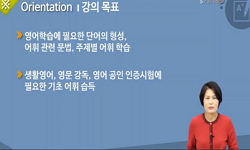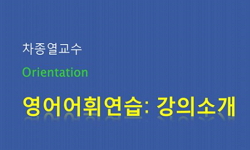This research aims to investigate the similarity and the diversity between Macedonian and Bulgarian lexicon. As it is well known, Macedonian and Bulgarian have the same mother tongue, Proto Slavic, Common Slavic and Old Church Slavic Language. That’...
http://chineseinput.net/에서 pinyin(병음)방식으로 중국어를 변환할 수 있습니다.
변환된 중국어를 복사하여 사용하시면 됩니다.
- 中文 을 입력하시려면 zhongwen을 입력하시고 space를누르시면됩니다.
- 北京 을 입력하시려면 beijing을 입력하시고 space를 누르시면 됩니다.
https://www.riss.kr/link?id=A104652341
-
저자
김원회 (한국외국어대학교)
- 발행기관
- 학술지명
- 권호사항
-
발행연도
2011
-
작성언어
English
-
주제어
Macedonian ; Bulgarian ; Slavic Language ; Lexicon ; Language Contact ; 마케도니아어 ; 불가리아어 ; 슬라브어 ; 어휘 ; 언어접촉
-
등재정보
KCI등재
-
자료형태
학술저널
- 발행기관 URL
-
수록면
31-49(19쪽)
-
KCI 피인용횟수
0
- 제공처
-
0
상세조회 -
0
다운로드
부가정보
다국어 초록 (Multilingual Abstract)
- AA type: Macedonian example is same with Bulgarian - AA’ type: Macedonian example has same root with Bulgarian - AB type: Macedonian example is different from Bulgarian - ABC type: Macedonian example has 2 more different counter examples with Bulgarian or vice versa
As a result of these studies, Macedonian lexicon is very similar to that of Bulgarian vocabularies in spite of the many influences from Serbian and even from Turkish(Ottoman Empire influences). It means that AA, AA' type examples are main part of their lexicon. Even more, we can find the Greek and Latin influences in the borrowings. In the field of adverbs, about 32-34% adverbs have different word forms between the two languages. But these differences are from dialectic adoptions of South Slavic languages.
This research aims to investigate the similarity and the diversity between Macedonian and Bulgarian lexicon. As it is well known, Macedonian and Bulgarian have the same mother tongue, Proto Slavic, Common Slavic and Old Church Slavic Language. That’s why two languages have similar Slavic language features in their lexicons. On the other hand, in spite of this historical background, contemporary Macedonian and Bulgarian have many diverse linguistic features. This diversity comes from social linguistic factors and language contacts with other Balkan countries (Greek, Romanian, Serbian et al). These features should be shown also in their lexicons. In this paper was analyzed lexicon of these two languages with the help of Macedonian-Bulgarian dictionary (as a low data material). I divided the results as following sub-groups.
- AA type: Macedonian example is same with Bulgarian - AA’ type: Macedonian example has same root with Bulgarian - AB type: Macedonian example is different from Bulgarian - ABC type: Macedonian example has 2 more different counter examples with Bulgarian or vice versa
As a result of these studies, Macedonian lexicon is very similar to that of Bulgarian vocabularies in spite of the many influences from Serbian and even from Turkish(Ottoman Empire influences). It means that AA, AA' type examples are main part of their lexicon. Even more, we can find the Greek and Latin influences in the borrowings. In the field of adverbs, about 32-34% adverbs have different word forms between the two languages. But these differences are from dialectic adoptions of South Slavic languages.
참고문헌 (Reference)
1 Усикова Рина, "Современный Литературный Македонский Язык как предмет Славяноведения и Балканистики" Скопjе 2008
2 Христова-Симоновска Ан, "Речник Българско-македонски, Македонско-български с къса граматика" Скопjе: Венециjа 2005
3 Колев Г, "Наблюдения върху Членната Форма в Българските Народни Говори" IV : 63-72, 1991
4 Конески Блаже, "Историjа на Македонскиот Jазик" Детска радост 1996
5 Колев Г, "Българските Говори с Тричленни Показателни и Едночленни Определителни Системи като Преходни" 6 : 139-155, 1993
6 Lunt H.G, "Old Church Slavonic Grammar. 7th ed" Mouton de Gruyter 2001
7 de Bray R.G.A, "Guide to the South Slavonic Languages (3rd edition)" Slavica 1980
8 Townsend Ch, "Common and Comparative Slavic: Phonology and Inflection" Slavica 1996
1 Усикова Рина, "Современный Литературный Македонский Язык как предмет Славяноведения и Балканистики" Скопjе 2008
2 Христова-Симоновска Ан, "Речник Българско-македонски, Македонско-български с къса граматика" Скопjе: Венециjа 2005
3 Колев Г, "Наблюдения върху Членната Форма в Българските Народни Говори" IV : 63-72, 1991
4 Конески Блаже, "Историjа на Македонскиот Jазик" Детска радост 1996
5 Колев Г, "Българските Говори с Тричленни Показателни и Едночленни Определителни Системи като Преходни" 6 : 139-155, 1993
6 Lunt H.G, "Old Church Slavonic Grammar. 7th ed" Mouton de Gruyter 2001
7 de Bray R.G.A, "Guide to the South Slavonic Languages (3rd edition)" Slavica 1980
8 Townsend Ch, "Common and Comparative Slavic: Phonology and Inflection" Slavica 1996
동일학술지(권/호) 다른 논문
-
Renormalization in softness assimilation
- 한국슬라브어학회
- 이성민
- 2011
- KCI등재
-
- 한국슬라브어학회
- 안혁
- 2011
- KCI등재
-
Miejsce czasu przyszłego w systemie czasów gramatycznych, jego struktura i funkcje pragmatyczne
- 한국슬라브어학회
- Władysław Kryzia
- 2011
- KCI등재
-
Семантические и синтаксические особенности Причины в русских эмоциональных глаголах
- 한국슬라브어학회
- 정정원
- 2011
- KCI등재
분석정보
인용정보 인용지수 설명보기
학술지 이력
| 연월일 | 이력구분 | 이력상세 | 등재구분 |
|---|---|---|---|
| 2026 | 평가예정 | 재인증평가 신청대상 (재인증) | |
| 2020-01-01 | 평가 | 등재학술지 유지 (재인증) |  |
| 2017-01-01 | 평가 | 등재학술지 유지 (계속평가) |  |
| 2013-01-01 | 평가 | 등재학술지 유지 (등재유지) |  |
| 2010-01-01 | 평가 | 등재학술지 유지 (등재유지) |  |
| 2007-01-01 | 평가 | 등재학술지 선정 (등재후보2차) |  |
| 2006-01-01 | 평가 | 등재후보 1차 PASS (등재후보1차) |  |
| 2004-01-01 | 평가 | 등재후보학술지 선정 (신규평가) |  |
학술지 인용정보
| 기준연도 | WOS-KCI 통합IF(2년) | KCIF(2년) | KCIF(3년) |
|---|---|---|---|
| 2016 | 0.15 | 0.15 | 0.11 |
| KCIF(4년) | KCIF(5년) | 중심성지수(3년) | 즉시성지수 |
| 0.12 | 0.11 | 0.379 | 0.14 |




 스콜라
스콜라






